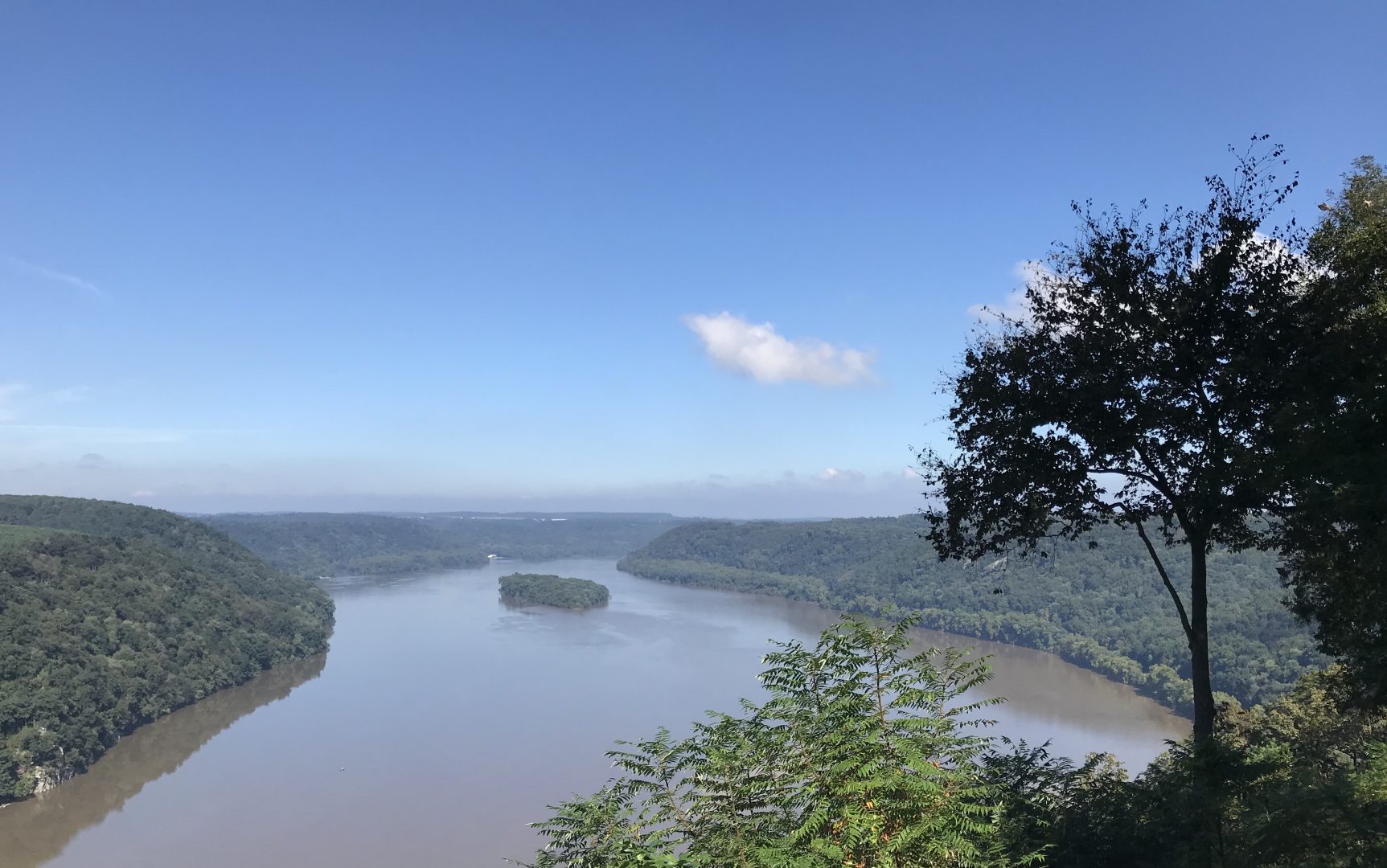
The Pinnacle Overlook offers views of the Susquehanna River's Lake Aldred in Susquehannock State Park, Lancaster County.
Marie Cusick / StateImpact Pennsylvania


The Pinnacle Overlook offers views of the Susquehanna River's Lake Aldred in Susquehannock State Park, Lancaster County.
Marie Cusick / StateImpact Pennsylvania

Marie Cusick / StateImpact Pennsylvania
The Pinnacle Overlook offers views of the Susquehanna River's Lake Aldred in Susquehannock State Park, Lancaster County.
Pennsylvania’s water sources face threats from agricultural pollution, abandoned mineland and oil and gas development.
Communities must figure out how to deal with the risks flooding presents to homes and buildings and ensure treatment plants supply safe drinking water.
That’s according to the Department of Environmental Protection’s recently updated State Water Plan. The report makes several recommendations for the state government to better coordinate flood response and to give more resources to regional planning.
Pennsylvania generally has abundant water. But the report, developed with help from more than 100 water resources professionals , says the commonwealth must take steps to clean and protect its waterways and nearby communities.
Kate Harper, a former state lawmaker who worked on the report, said the issues raised should be top of mind for planners at all levels of government.
“We just have to do a better job of integrating water planning with every other kind of planning, and particularly land use,” Harper said.
Scientists expect Pennsylvania will see heavier storms and increased flooding because of climate disruption.
The report’s recommendations include that the state should provide more resources, for example, grants to incentivize municipalities to work together on land use issues.
“Watersheds are bigger than one municipality and so it makes sense to encourage them to cooperate on things that are bigger than they are,” Harper said.
The report is accompanied by the Water Resources Atlas, which is meant to be a tool for planners.
A 2022 report from DEP found one third of the state’s waterways are too polluted for aquatic life, recreation, fish consumption, or to supply drinking water.
Farming is the leading source of that pollution. The report recommends dedicating more money to help farmers with conservation efforts that reduce runoff, as well as to clean-up efforts.
In a statement, the Pennsylvania Farm Bureau said it is pleased that the plan recognizes that “farmers need additional financial and technical resources to aid their long-standing, voluntary investments in protecting the land, air and water that all Pennsylvanians depend upon.”
PFB notes recent data from DEP’s Chesapeake Bay Agriculture Inspection Program show the majority of farms inspected in the July 2021-June 2022 period were found to have required conservation plans complete at the time of inspection, with conservation practices functioning as intended.
By law, the water plan is supposed to be updated every five years. The last version was released in 2009.
StateImpact Pennsylvania is a collaboration among WITF, WHYY, and the Allegheny Front. Reporters Reid Frazier, Rachel McDevitt and Susan Phillips cover the commonwealth’s energy economy. Read their reports on this site, and hear them on public radio stations across Pennsylvania.
(listed by story count)
StateImpact Pennsylvania is a collaboration among WITF, WHYY, and the Allegheny Front. Reporters Reid Frazier, Rachel McDevitt and Susan Phillips cover the commonwealth’s energy economy. Read their reports on this site, and hear them on public radio stations across Pennsylvania.
Climate Solutions, a collaboration of news organizations, educational institutions and a theater company, uses engagement, education and storytelling to help central Pennsylvanians toward climate change literacy, resilience and adaptation. Our work will amplify how people are finding solutions to the challenges presented by a warming world.